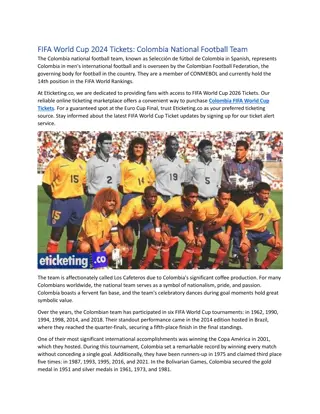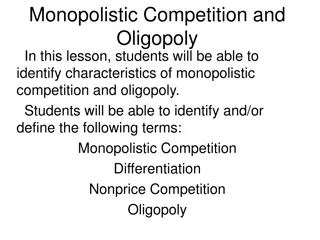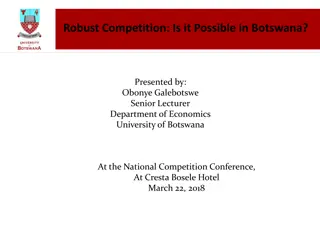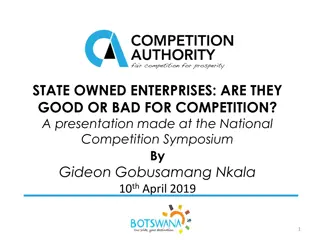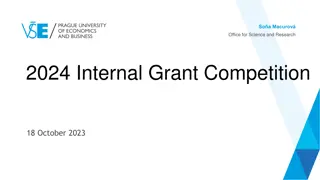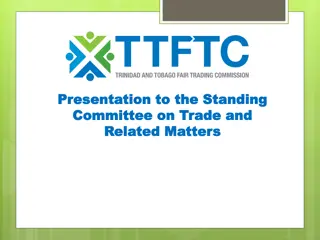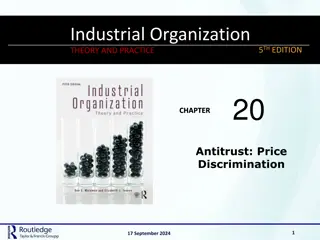
Moot Court Competition Overview and Argument Logistics
Dive into the world of Moot Court competitions and learn about the structure, preparation, and benefits of participating. Understand the process of presenting arguments, answering judges' questions, and honing essential legal skills during mock appellate advocacy. Discover why competing in Moot Court can enhance your public speaking abilities and professional development, paving the way for a successful legal career.
Download Presentation

Please find below an Image/Link to download the presentation.
The content on the website is provided AS IS for your information and personal use only. It may not be sold, licensed, or shared on other websites without obtaining consent from the author. If you encounter any issues during the download, it is possible that the publisher has removed the file from their server.
You are allowed to download the files provided on this website for personal or commercial use, subject to the condition that they are used lawfully. All files are the property of their respective owners.
The content on the website is provided AS IS for your information and personal use only. It may not be sold, licensed, or shared on other websites without obtaining consent from the author.
E N D
Presentation Transcript
2024 Hardt Cup Competition Please sign in with the QR code!
Moot Court Overview Argument Logistics Overview Introduction Theme Roadmap Facts Argument Conclusion Rebuttal Oral Argument Tips 2024 Hardt Cup Logistics Preparation Honor Code Key Dates
What is Moot Court? Moot Court is a mock appellate advocacy competition Competitors prepare and present an argument based on the facts of a lower court s case before a panel of judges During argument, judges ask questions that the competitors must answer before continuing their argument Competitors are arguing either to affirm or reverse the holding of the lower court
Why compete in a Moot Court Competition? All lawyers must present, often with little time to prepare! This is a great way to practice public speaking and thinking on the fly Practice professional presentation skills and developing quality, well-structured arguments Explore appellate advocacy Some judges and firms think highly of moot court experience You may qualify to join the Moot Court Board!
Overview Each side receives 10 minutes to present their case Someone will be holding up time cards in your round, so you should always know how much time you have left Petitioner/Appellant begins first Ask to reserve 1-2 minutes for rebuttal this comes out of your argument time, so you will argue for 8-9 minutes Respondent/Appellee goes second You do not have the opportunity to ask for a rebuttal, but you should devote some of your allotted time to rebutting the points Petitioner/Appellant made
Overview Make note of whether you are arguing in front of the Supreme Court or a Circuit Court Supreme Court: Petitioner/Respondent Circuit Court: Appellant/Appellee Remember that judges will be asking questions while you are presenting your case this will take up some of your time, so flexibility is key A cold bench is when judges ask few questions, so you may be laying out your prepared argument for most of the allotted time A hot bench is when judges as a lot of questions, so you may be doing more pivoting and responding than relying on your prepared points
Introduction The introduction is where you introduce yourself and tell the judges what this case is about and sum up your argument The key components are: Your party (including your name and which side you represent) Request to reserve time for rebuttal (if you re the petitioner) Your theme (what you think the case is about) Your prayer for relief (where you ask the court for them to affirm/reverse) Your roadmap (where you lay out your argument)
Introduction Structure Supreme Court Mister/Madam Chief Justice, and may it please the court, my name is _____, counsel for the (Petitioner/Respondent), _____ (the party s name). Address justices as Justice ______(their name) , or Your Honor Circuit Court May it please the Court, my name is _____, counsel for the (Appellant/Appellee), _____ (the party s name). Address judges as Judge_____ (their name) , or Your Honor Request for rebuttal (Petitioner/Appellant only) With the Court s permission, I d like to reserve (1-2) minutes for rebuttal.
Theme A theme is a short phrase that sums up the most salient points in your argument It should be catchy and memorable Themes should capture the heart of the argument, for example in a 4thamendment case, you might use a theme like protecting the private rights of citizens An example is: This case is about _________
Prayer for Relief and Roadmap In the prayer for relief, you are asking the judges to either affirm or reverse The roadmap is where you tell the judges what the key points of your argument are This should be short, and you should be able to sum up each of your arguments in a few words This Court should (affirm/reverse) the lower court and hold that ______ (what you want them to hold) for _____ (number of points) main reasons. First, ________ Second, _________ Third, _________
Facts Even if you are not asked for the facts, you should know the record incredibly well, including which facts are best and worst for your argument The judges may ask questions involving particular facts of the case and you should be able to be prepared to answer If you re the respondent/appellee, you may offer facts if you feel that the plaintiff/appellant has made a legally significant error in their recitation
Argument Start with your thesis or main point of the first argument Transition to the relevant case law for your point Then, apply the case law to the facts of this case Use analogical/counter analogical reasoning from the other cases in the packet, if relevant This structure should mirror and follow the argument you laid out in your appellate brief Try to follow the structure for each of your main arguments, but be prepared to discuss them out of order if, for example, a judge begins asking you questions about your second argument If you do have to skip around, make sure to circle back to your first argument at the end
Conclusion Once you see you have 30 seconds, transition into your conclusion Incorporate your legal conclusions into the result you seek Thus, because ______(short summary of point 1), ______ (short summary of point 2), and _________ (short summary of point 3), this Court should ______ (affirm/reverse) the lower court s decision and hold that ________. Thank you. If you run out of time, ask may I briefly conclude? Once given permission, say For the foregoing reasons, this Court should _____ (affirm/reverse) the lower court s decision. Thank you.
Rebuttal For Petitioner/Appellant only You should reserve about 1-2 minutes for rebuttal Remember that you need to ASK for the time, if you don t, you won t be able to rebut the Respondent/Appellee s arguments Don't repeat your introduction Focus on 1-2 points that Respondent/Appellee made that you want to focus on and then connect back to your own case and arguments Finish the rebuttal with the same prayer for relief and conclusion
Key Dates March 27 & 28: LARW Rounds (Evening) Thursday, April 4: Opt-in Deadline Friday, April 5: Problem Packet Released (Noon) Saturday and Sunday, April 6 & 7: Initial Opt-in Rounds Monday, April 8: Qualifying Round (Evening) Tuesday, April 9: Sweet 16 (Lunch) Tuesday, April 9: Elite 8 (Evening) Wednesday, April 10: Final 4 (Evening) Thursday, April 11: Championship Round (Lunch)
Key Dates Sunday Monday Tuesday Wednesday Thursday Friday Saturday 3/27 3/28 LARW Rounds LARW Rounds 4/4 4/5 4/6 Opt in Deadline @11:59 PM Problem Release @ 12:00 PM Preliminary Rounds 4/7 4/8 4/9 4/10 4/11 Preliminary Rounds Qualifying Round @ 5:30 PM Round of 16 @ 12:30 PM Round of 4 @ 6:00 PM Final Round @ 12:30 PM Round of 8 @ 6:00 PM
Preparation This is a closed universe problem you should only be using the information in the problem packet to craft your argument Do not do additional research You'll prepare both sides for the Opt-In Rounds We encourage you to watch past Hardt and Dean's Cup Final Rounds on YouTube! The judges aren t looking for novel or innovative arguments; they re looking for well-crafted arguments presented in a polished manner Make sure you devote adequate time to practicing your argument Don t spend all 24 hours working on your argument! Competitors will spend varying amounts of time on preparation, but we typically recommend about 4-8 hours of prep (including practice!)
Honor Code Once you receive the Opt-In packet, you are not allowed to discuss, prepare, or practice your oral arguments or oral advocacy with any other Hardt Cup competitors You also cannot discuss, prepare, or practice your oral arguments or oral advocacy or discuss any components of the Hardt Cup with any current or former moot court board members This includes general advice about oral advocacy and presentation tips You may attend any tips and tricks session hosted or cosponsored by the Moot Court Board,including affinity organization sessions. Failure to abide by these rules will result in an honor code violation When in doubt, ask the Hardt Cup Coordinators! (Brandon, Maggie, Miranda, Rachel)
Closing Thoughts Competing in the Hardt Cup is a fun, rewarding experience Opportunity to get onto the Moot Court board Practice oral advocacy skills and try your hand at appellate litigation! If you have any questions, please reach out to the Hardt Cup Coordinators. Maggie Ash, maggie.ash@duke.edu Brandon Bishop, brandon.bishop@duke.edu Rachel Gu, rachel.gu@duke.edu Miranda Campbell Kerrigan, miranda.campbell@duke.edu














